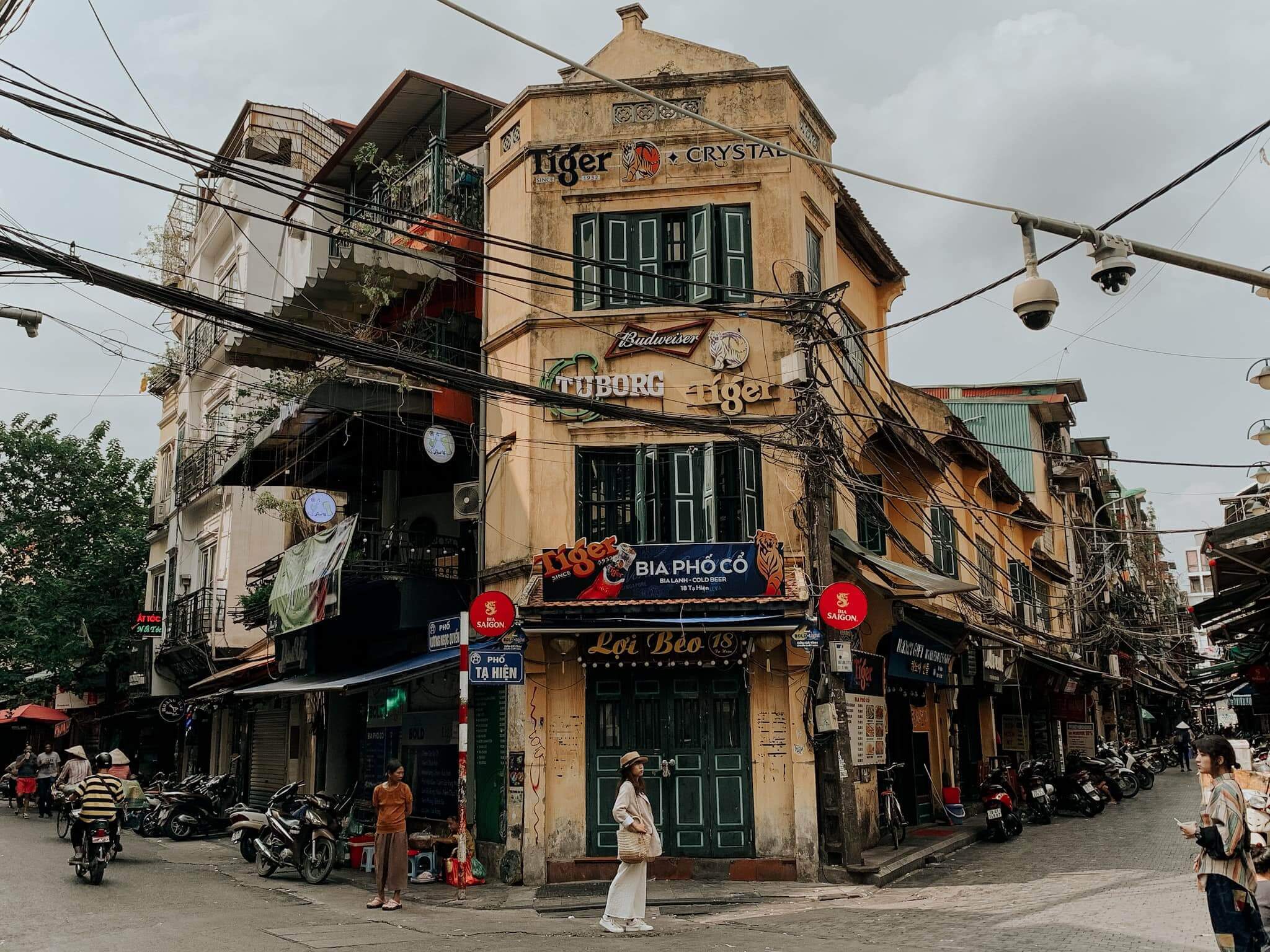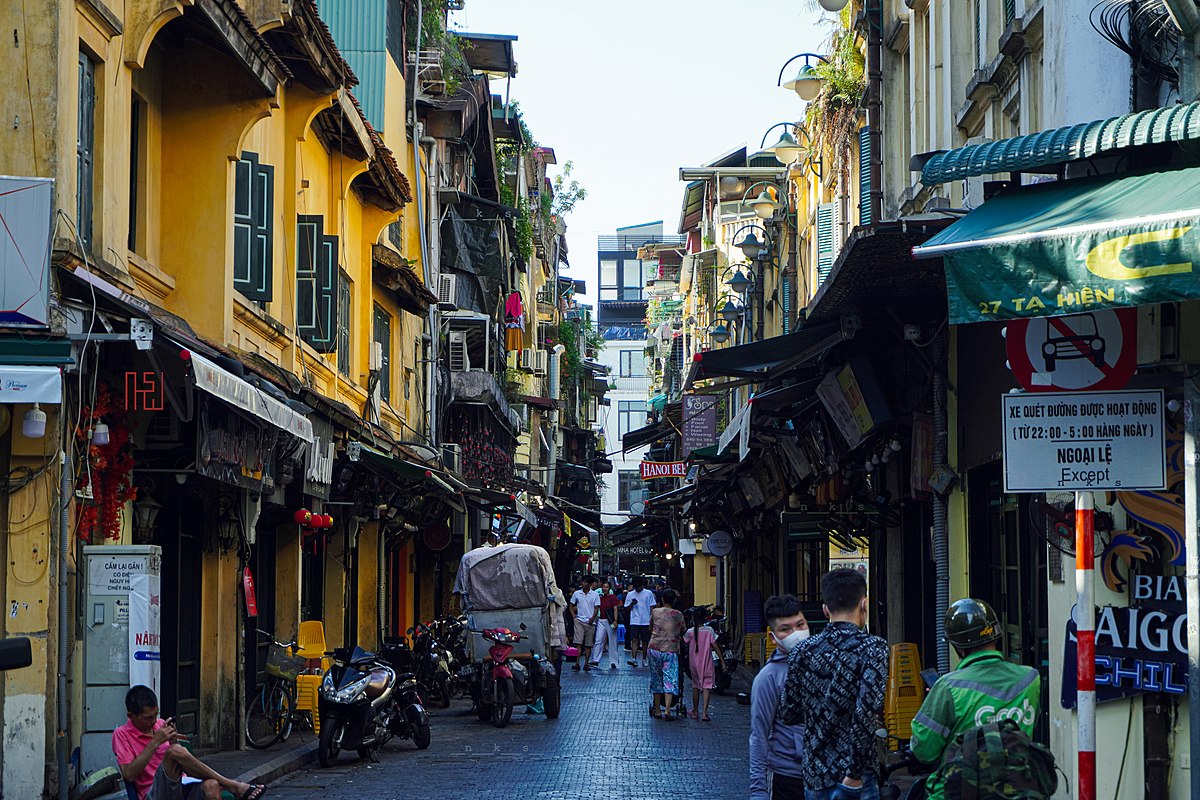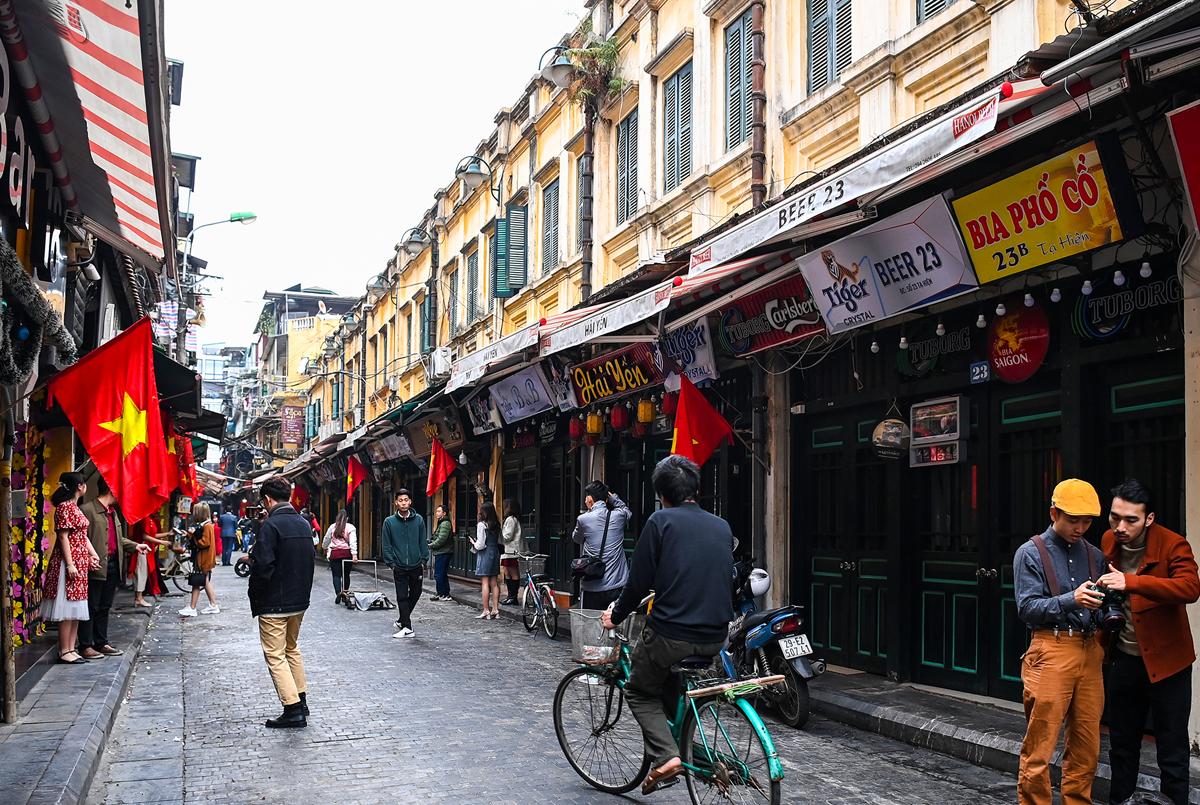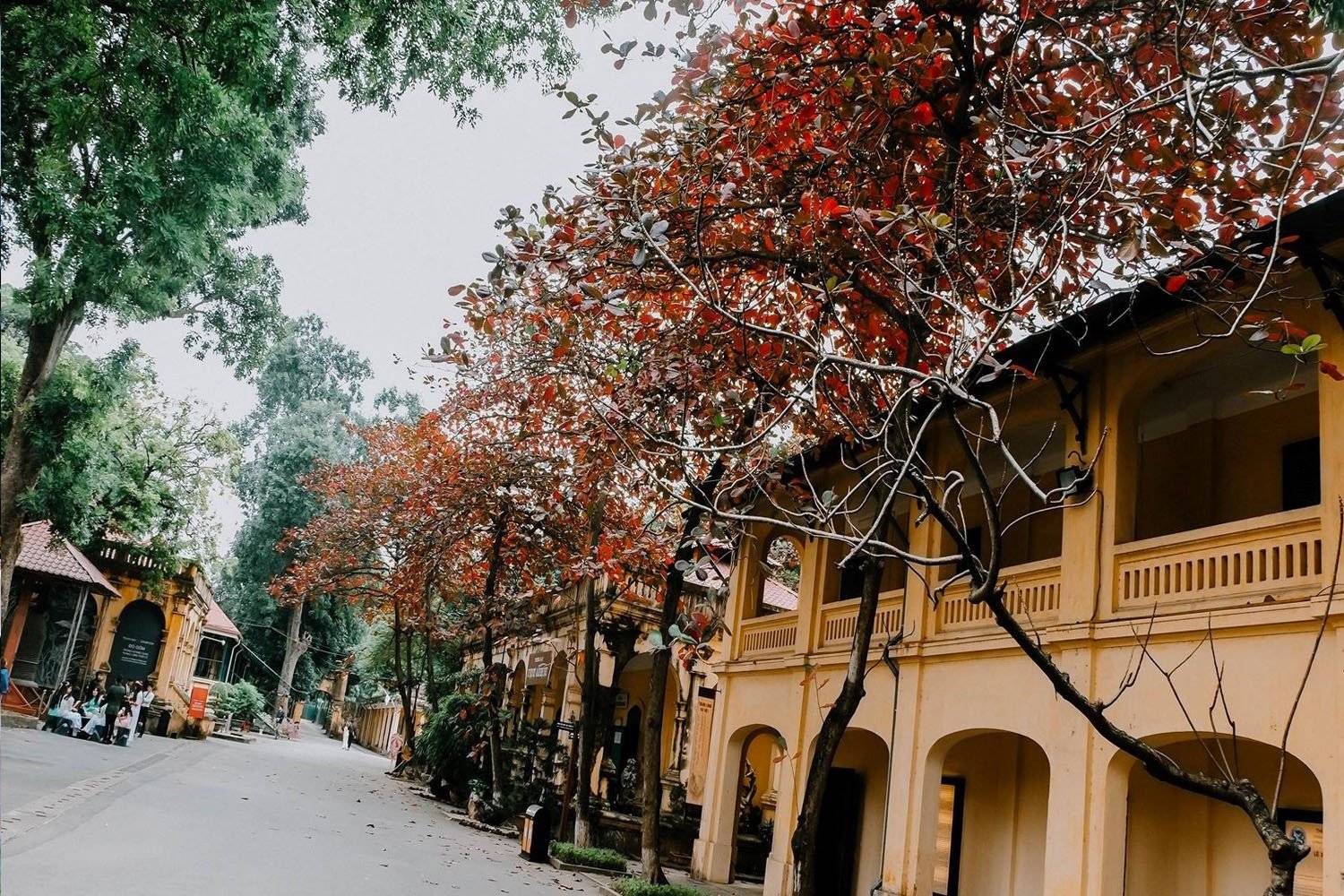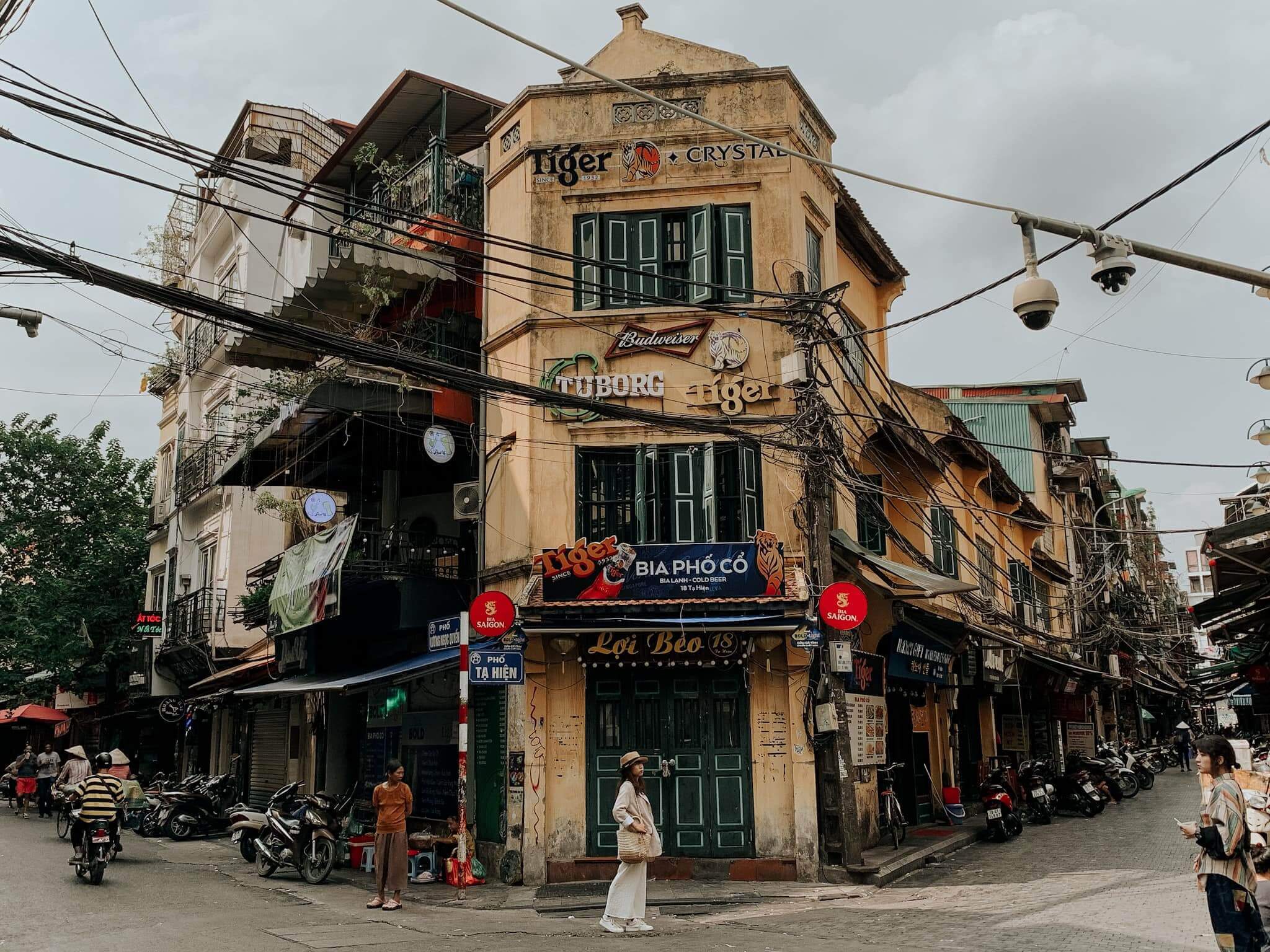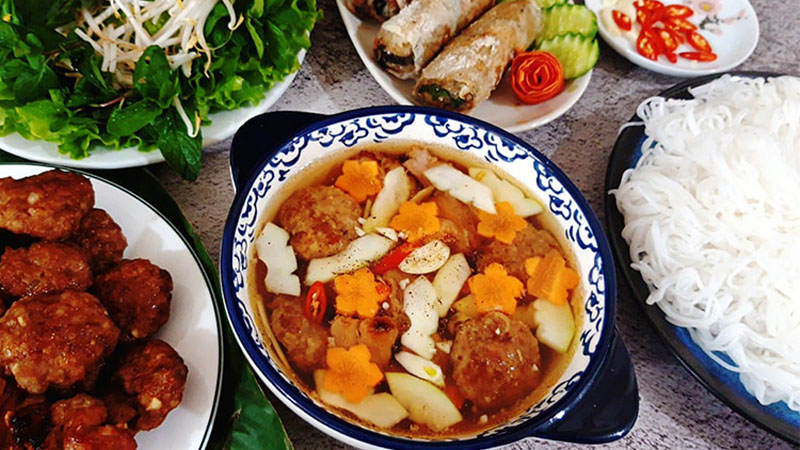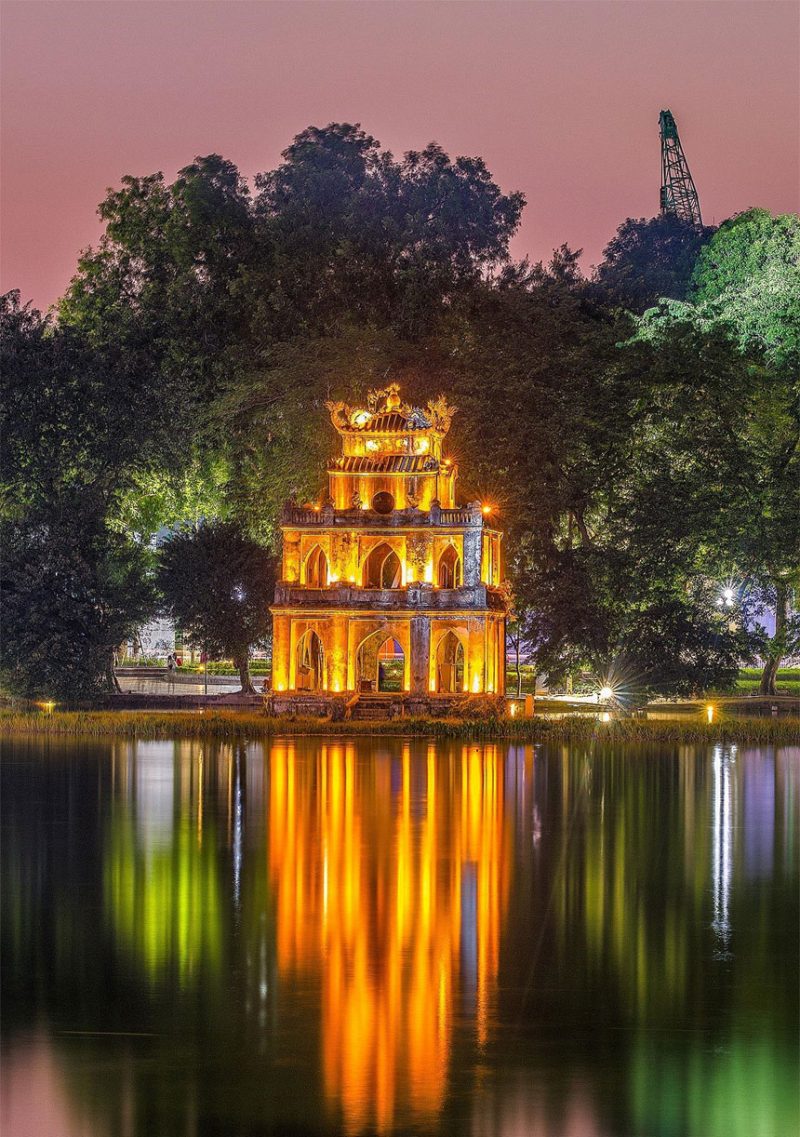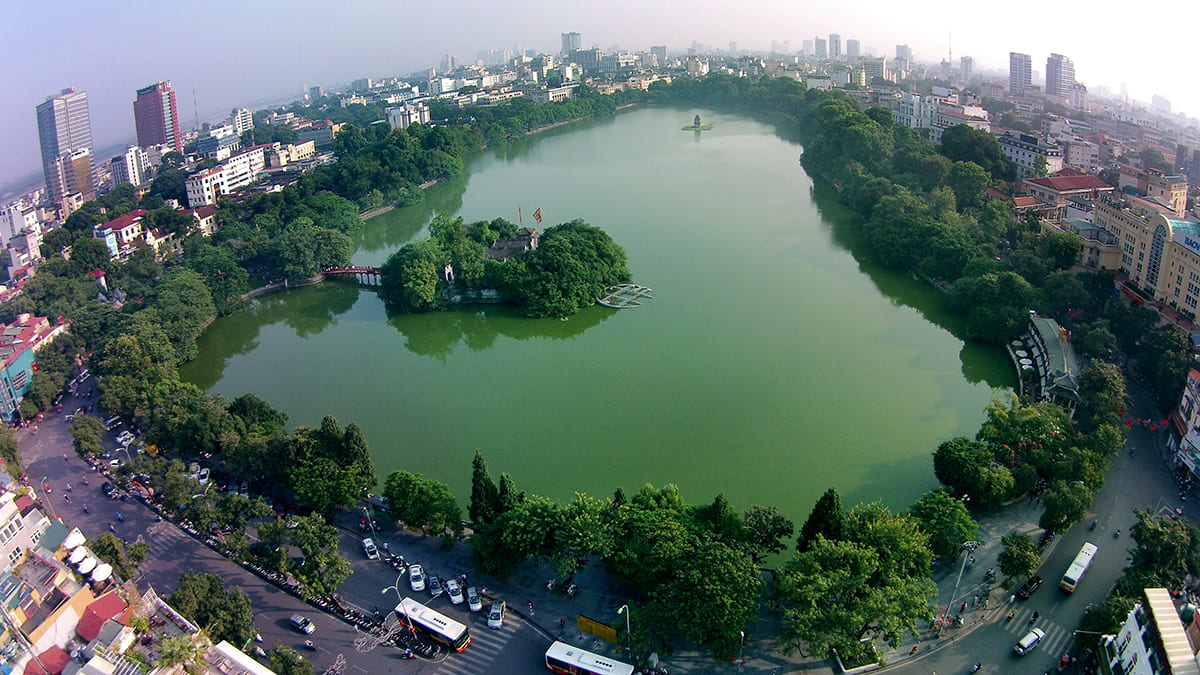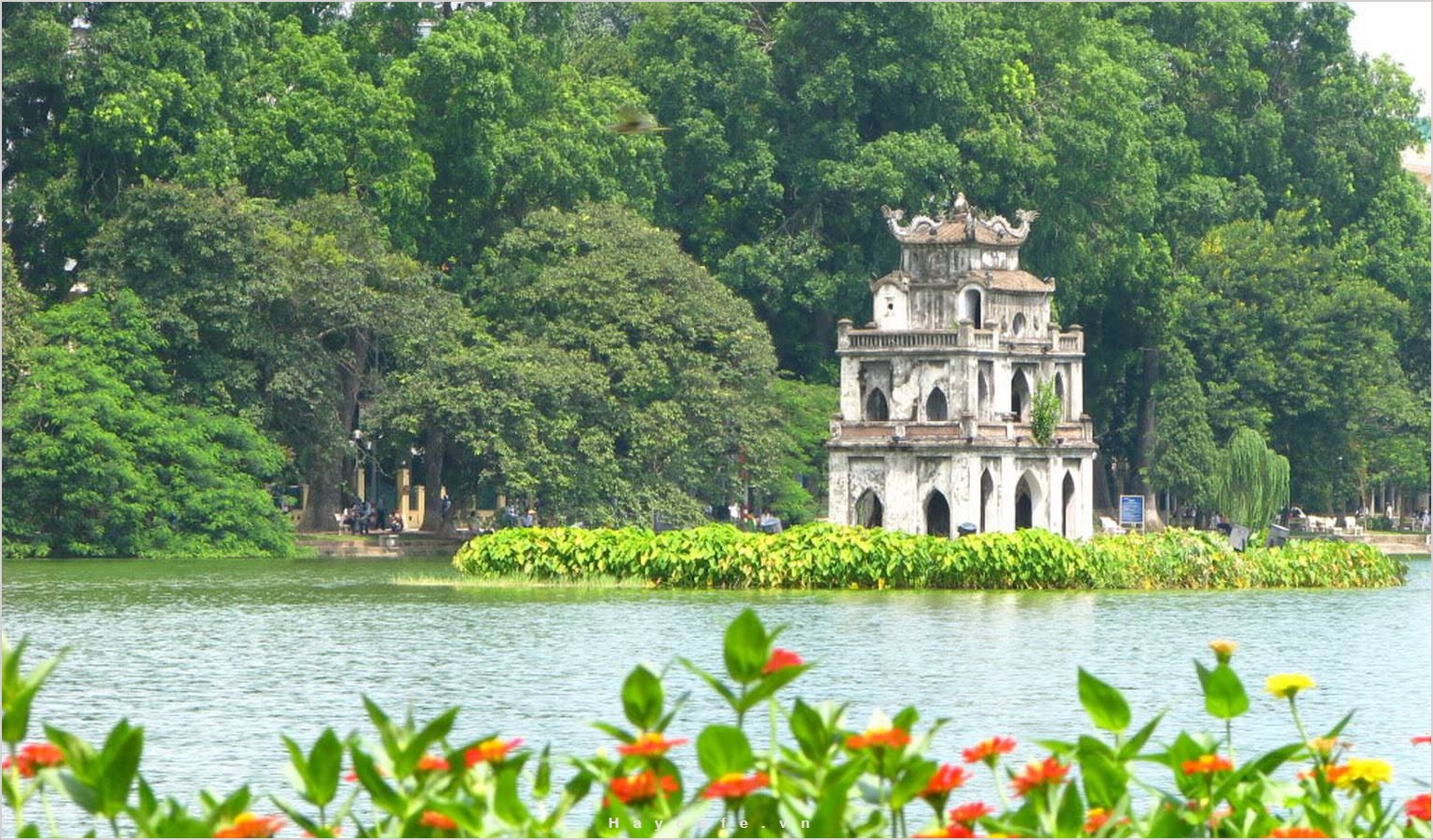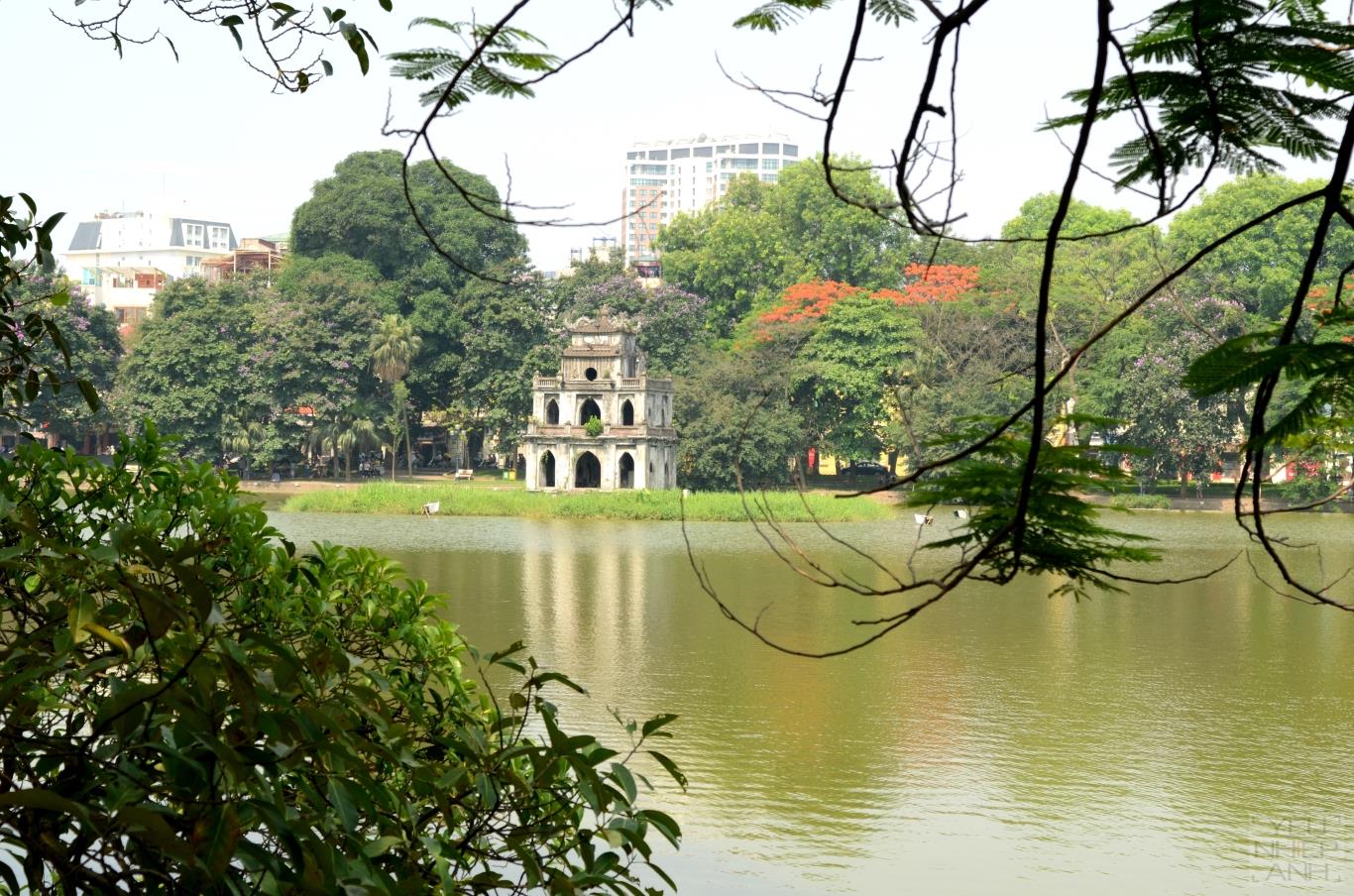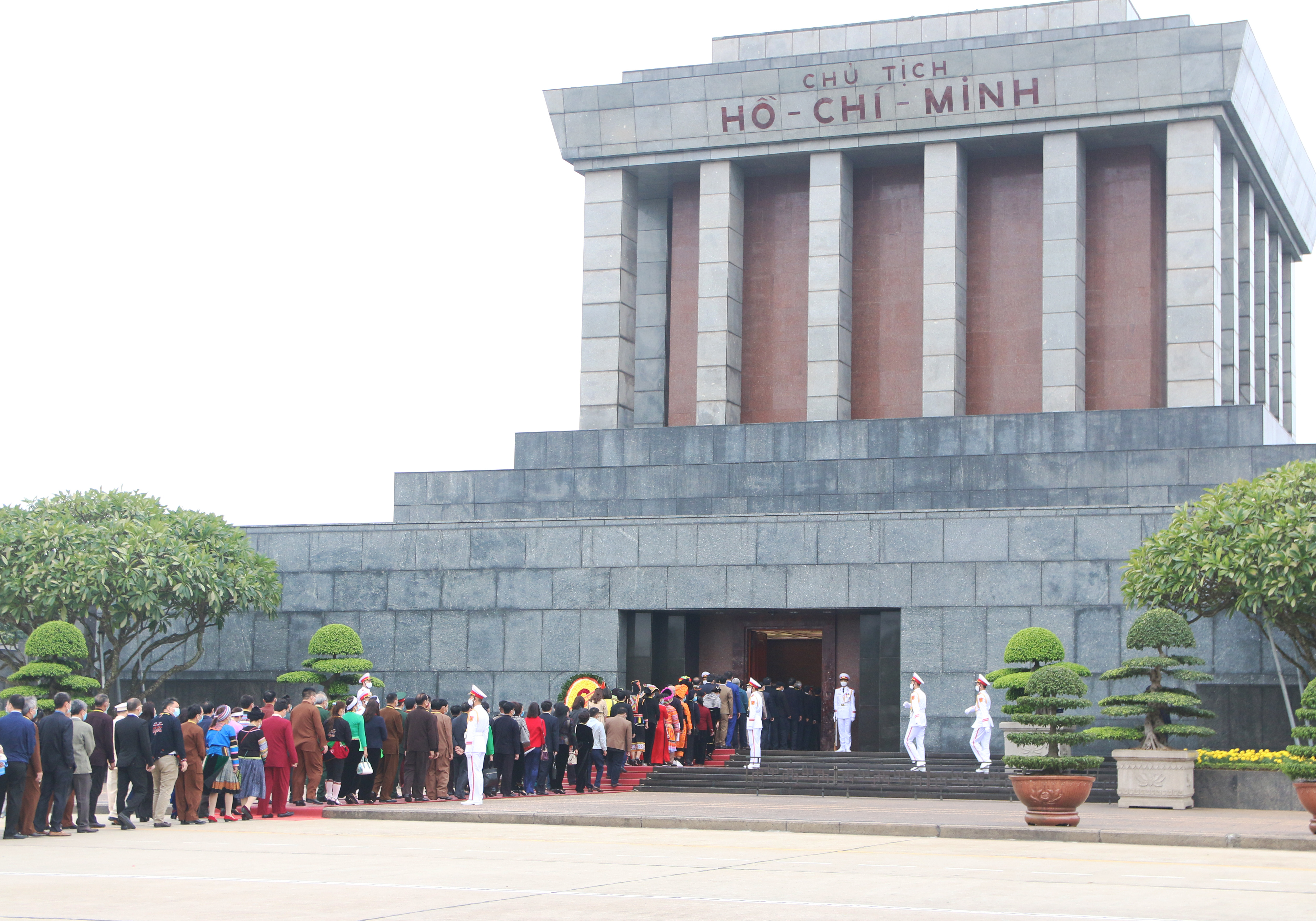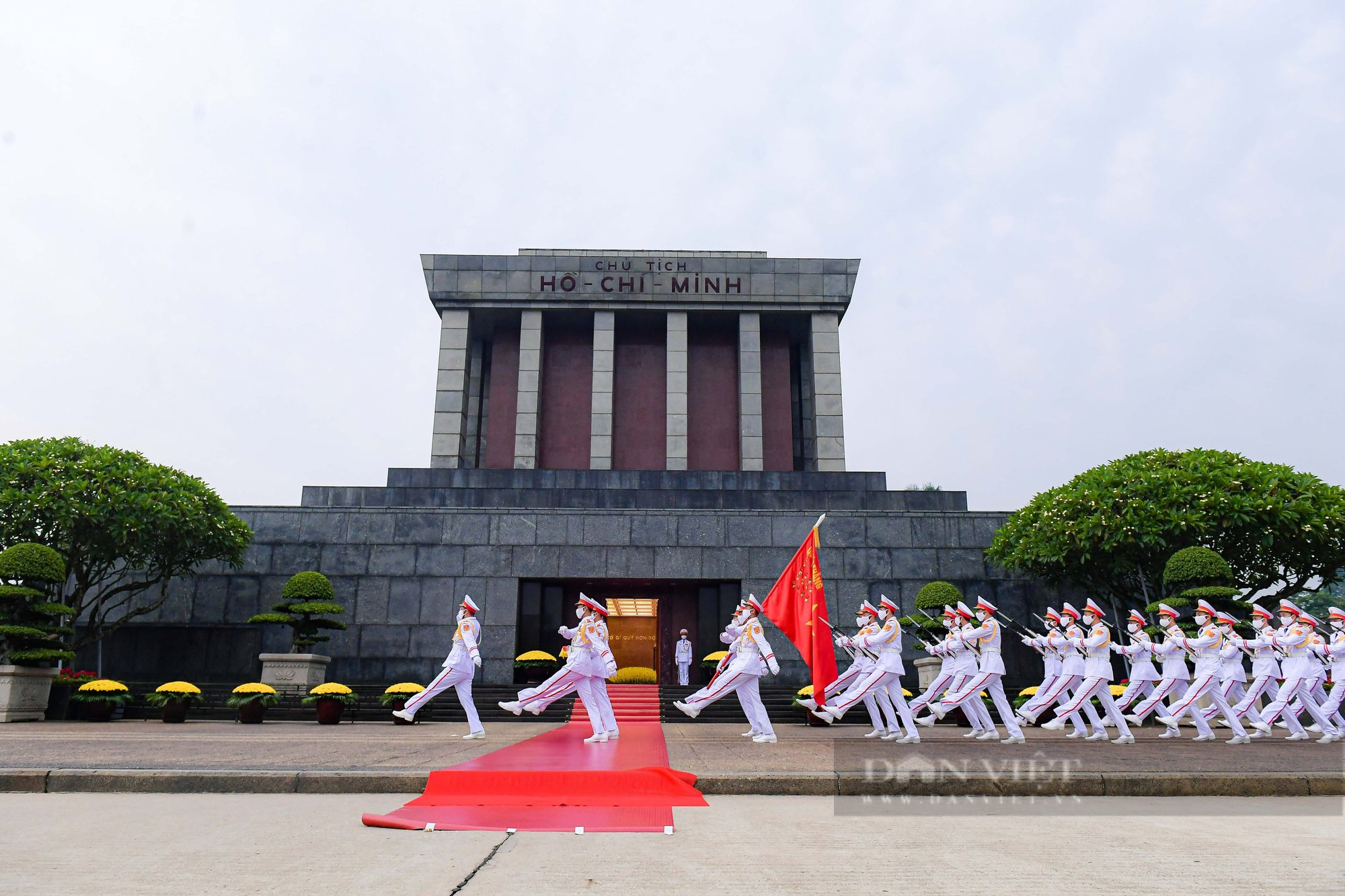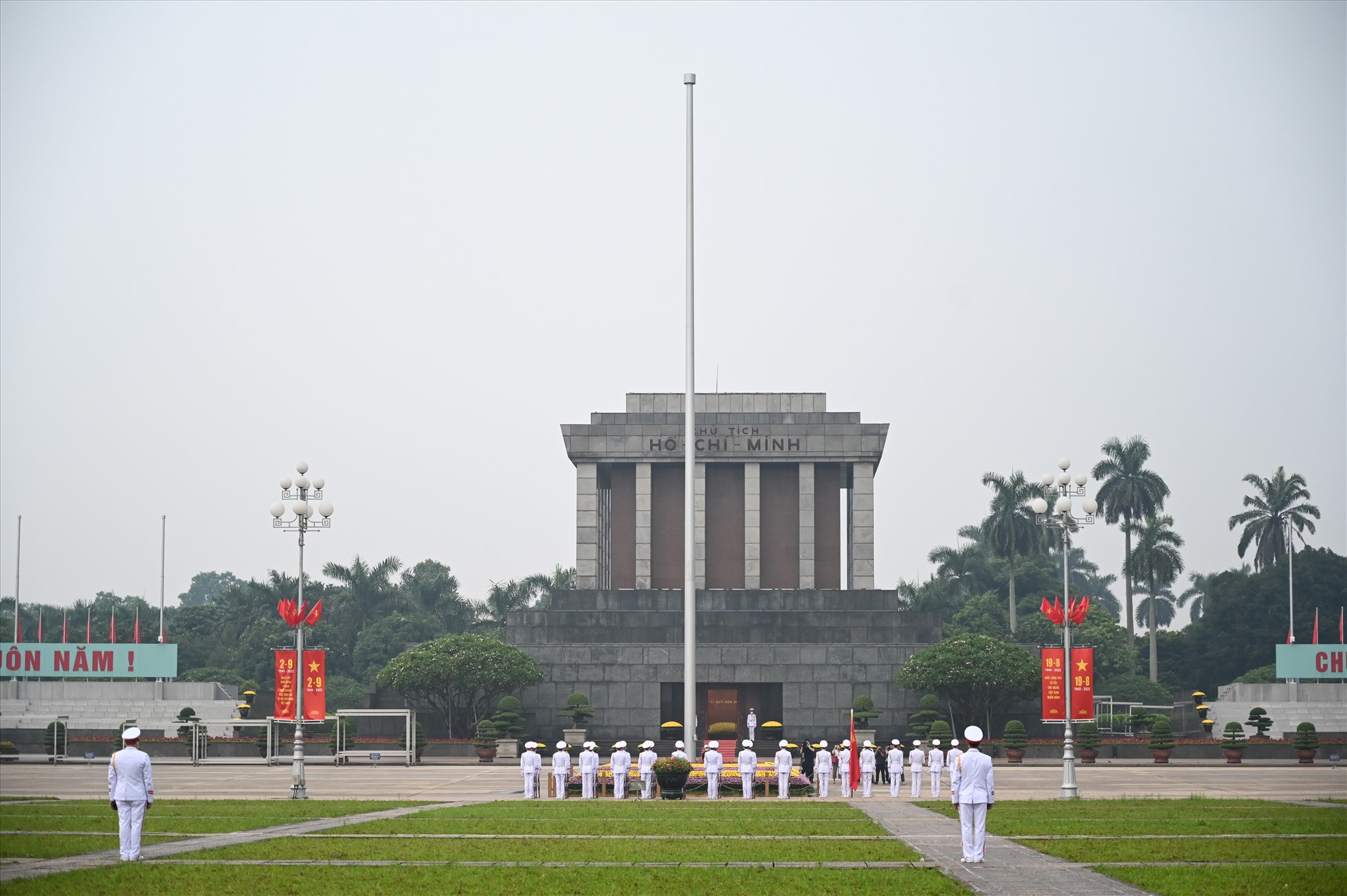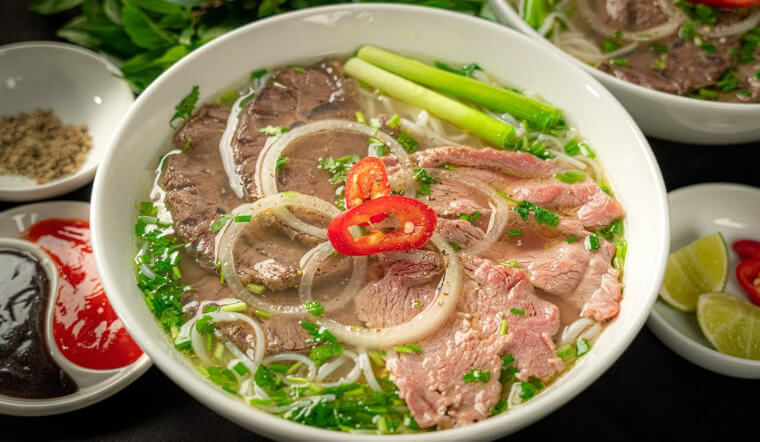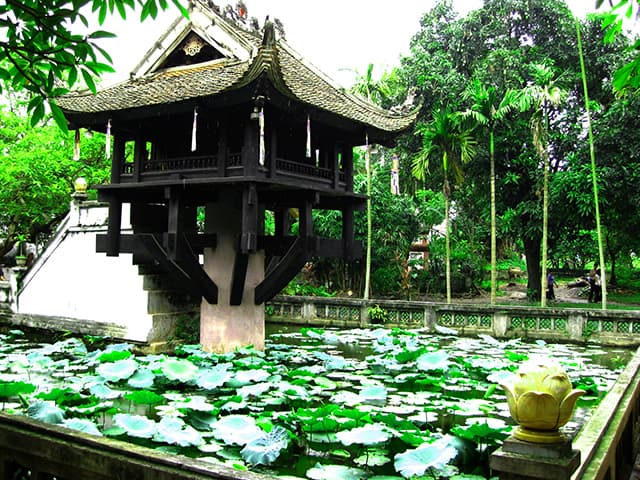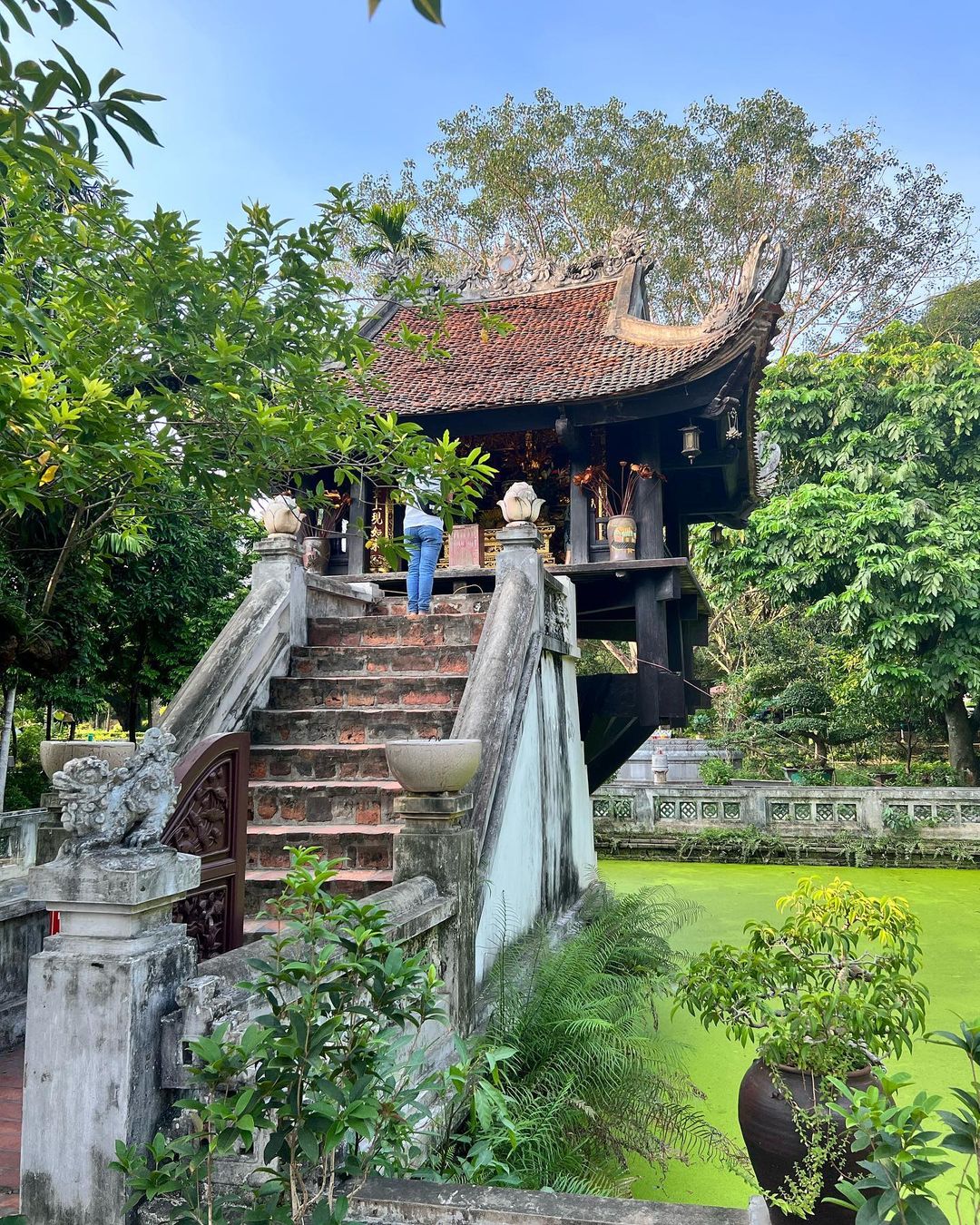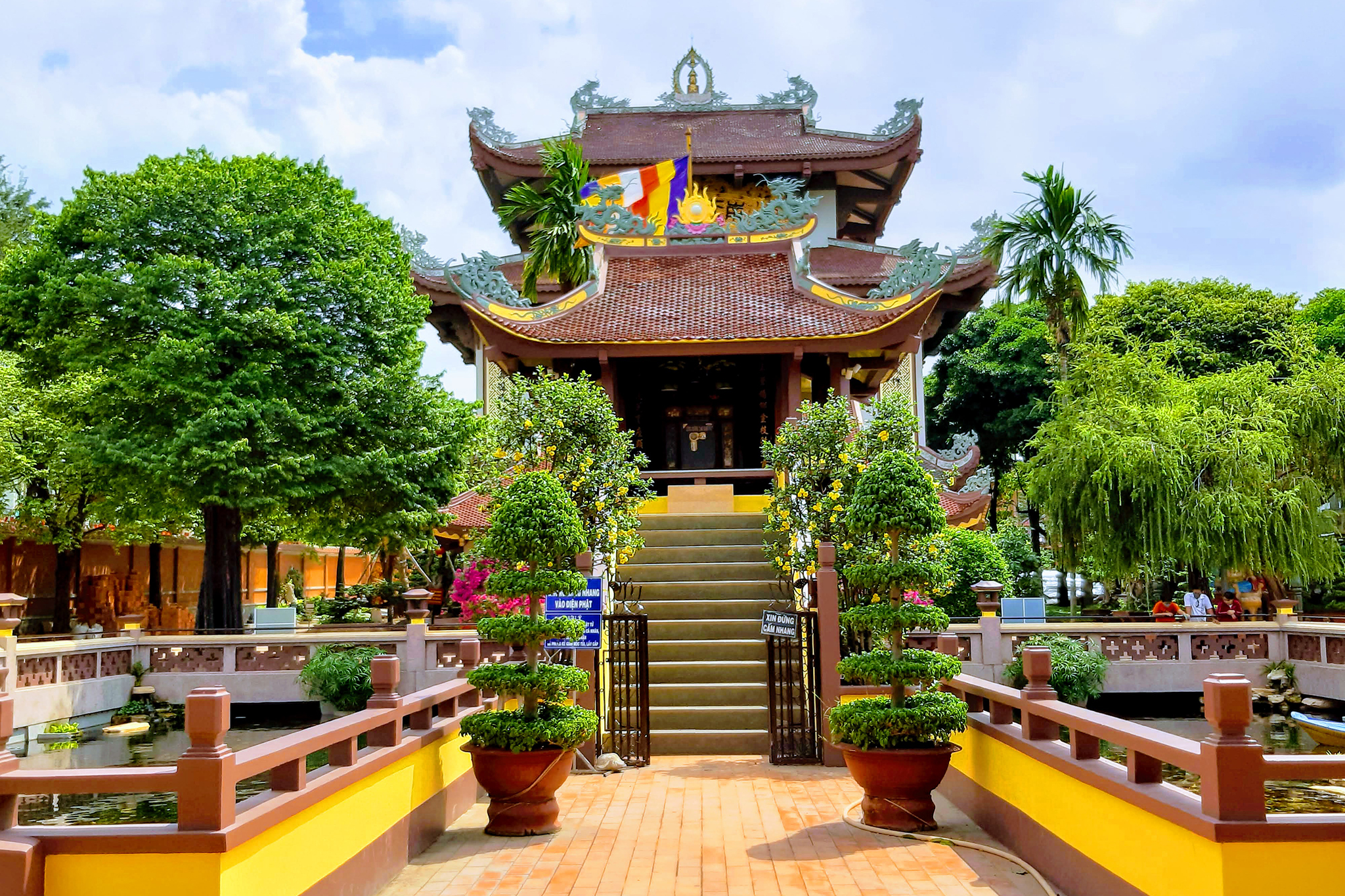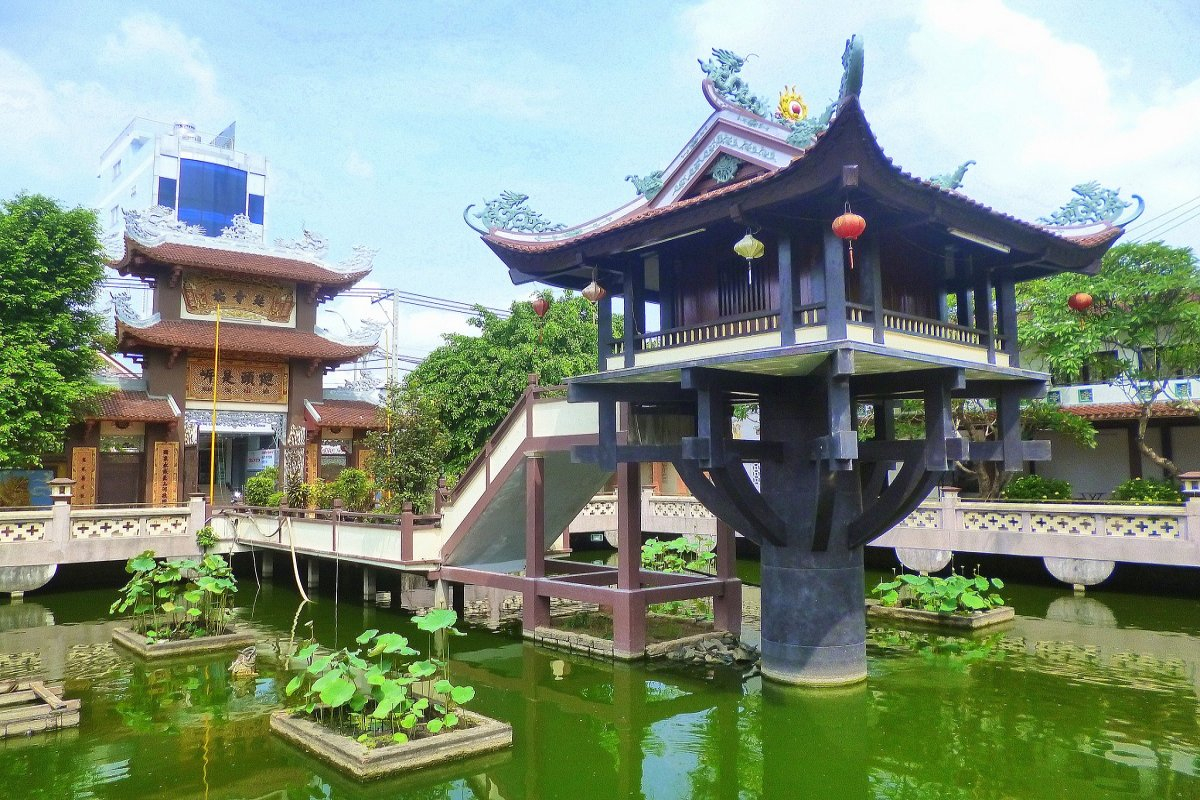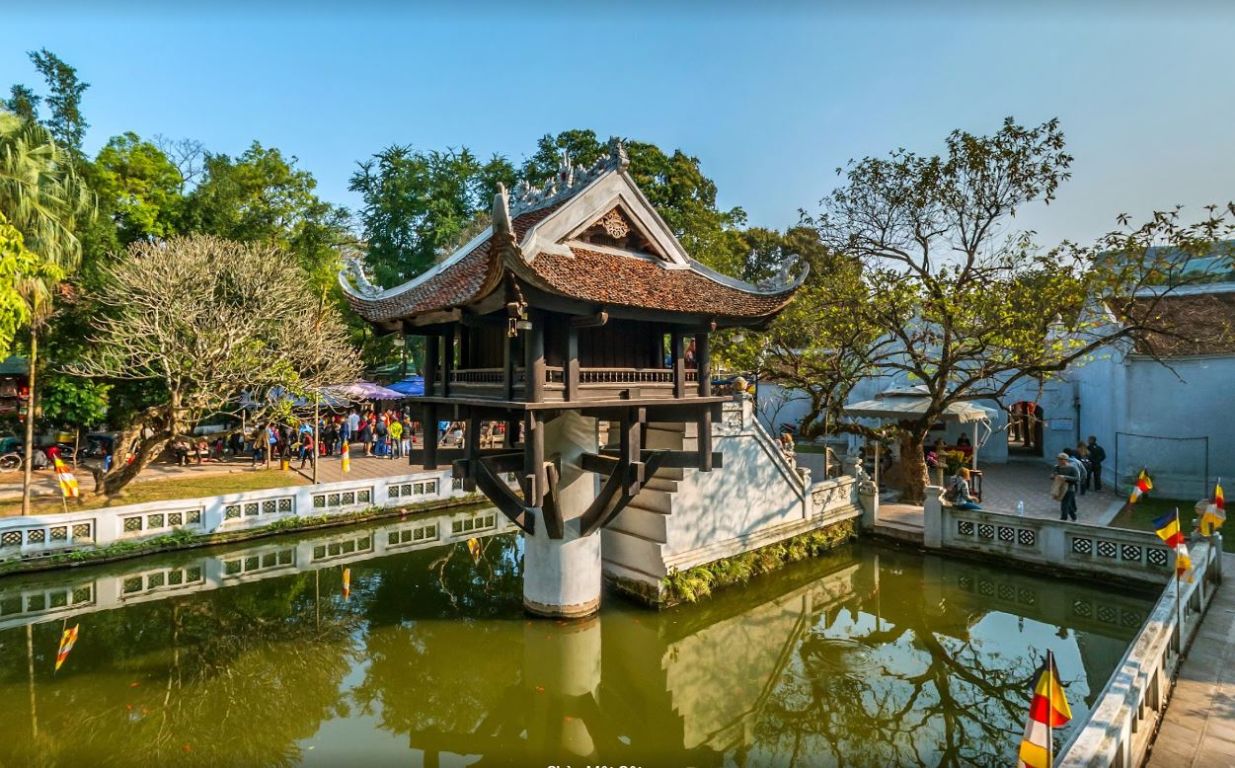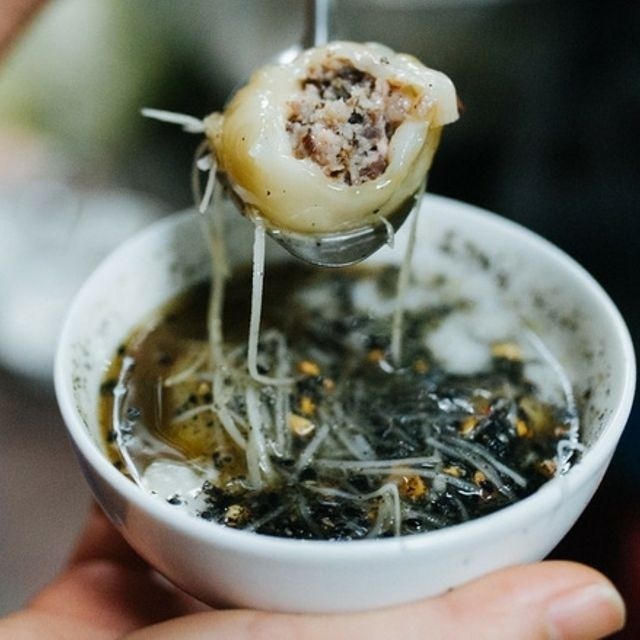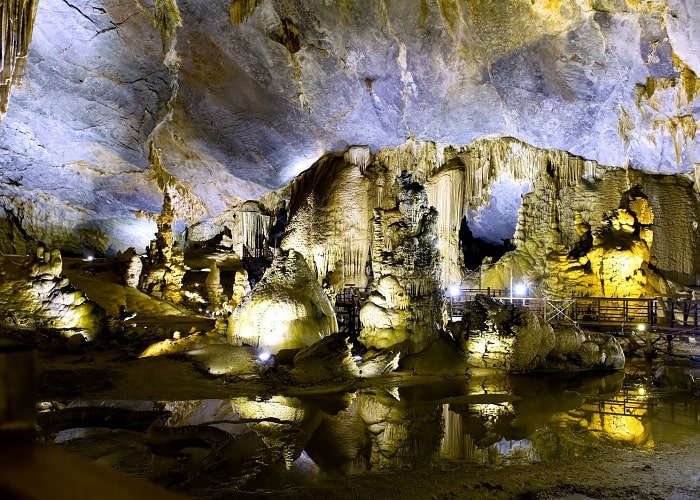Tourist destination
Hanoi Old Quarter
Referring to the history of Hanoi's 36 streets or Hanoi's Old Quarter, we probably have to go back to the period from the Ly - Tran dynasties, when this residential and commercial area began to form, residents from all the villages around the Northern Delta gathered and became the busiest area in the capital at that time. Not only that, this urban area also focuses on many handicraft and trade activities, from which the name "Hang" is formed, a call that refers to typical craft streets, imbued with tradition. Experiencing many ups and downs of the capital, that neighborhood still goes through the years, lasting until now, preserved and preserved to become Hanoi's old town in the hearts of many Vietnamese people. In terms of area, according to regulations of the Ministry of Construction, the official scope of Hanoi's Old Quarter is determined as follows: to the north is Hang Dau street; To the west is Phung Hung street; In the south are Hang Bong, Hang Gai, Cau Go and Hang Thung streets; and on the east side Tran Quang Khai street and Tran Nhat Duat street. Hanoi has 36 streets, the name has entered the subconscious of many people with the most simple and rustic features from names such as Hang Mam, Hang Non, Hang Duong, Hang Muoi... representing the main goods traded by small traders here. The old town has a very unique urban character, a prosperous and crowded place, always crowded with people but still retains the traditional cultural values from thousands of years ago of the capital. Each street gathers workers from famous craft villages around the ancient capital of Thang Long, turning each street here into a miniature craft village in the heart of Hanoi. Architecture is another unique feature that makes up the unique character of the old town, with the structure of tube houses, tilted tile roofs and storefronts specializing in business, built mainly in the 18th and 19th centuries. At first glance, the houses look small and shabby, but they are arranged very skillfully and reasonably by people, still fully serving the life needs of the people here. Hanoi's Old Quarter is beautiful with small roadside shops. Even though they are not luxury restaurants, the rich flavor attracts travelers, once they go they will never forget them. A session sitting by Hoan Kiem Lake, enjoying the wind, eating Thuy Ta ice cream, watching the flow of people passing by, or going to the street without enjoying Trang Tien ice cream is truly a mistake. Old Hanoi with its bustling street vendors weaving through each street with simple yet rustic dishes such as donuts, balut, or simply green rice, a heartwarming hometown gift for Trang An people can captivate any picky diner. Old town cuisine is associated with traditional dishes such as bun cha, pho, fish vermicelli, tofu vermicelli with shrimp paste, snail vermicelli, vermicelli thang,... from small roadside shops, or in ancient houses that are decades old. "Hanoi's 36 streets" is not only famous as the most entertaining place in Hanoi, but also preserves many historical and cultural values of more than a thousand years of civilization. You definitely should not miss this destination when visiting Hanoi.
Hanoi
From January to December
6276 view
Sword Lake
Hoan Kiem Lake is located in the center of the capital, surrounded by 3 streets: Hang Khay - Le Thai To - Dinh Tien Hoang. Previously, the lake also had a number of other names such as Luc Thuy Lake (green lake) or Thuy Quan Lake (because the lake used to be a place to train naval soldiers to fight). In the 15th century, the lake was renamed Hoan Kiem Lake (returning the sword), associated with the story of returning the precious sword to the golden turtle of King Le Thai To. Hoan Kiem Lake is a gathering place, an ideal meeting point for four seasons: Brilliant in peach colors and traditional festivals in spring; The wind blows away the sultry heat of summer; Fall in love with the weeping willow branches in the magical mist of autumn; Gorgeous in the rain of yellow leaves and drizzling raindrops of winter. Not only is it a beautiful landscape that tourists cannot miss in the list of Hanoi tourist destinations, but it is also a place associated with the capital's historical and spiritual traditions. Hoan Kiem Lake has two floating islands: Ngoc Island is located in the north of the lake, with a curved The Huc bridge connecting to the island. In the middle of the lake is a smaller Turtle Island, above which is a hundred-year-old ancient Turtle tower, sitting quietly amid sparkling water waves. On 3 weekends, the streets around Hoan Kiem Lake will become walking streets with many attractive activities such as street music, folk games... attracts a lot of tourists. Located on Ngoc Island, Ngoc Son Temple is not only a historical relic and famous scenic spot of Hanoi but also a place to worship the god Van Xuong, the leading star of literature and examinations, and Saint Tran Hung Dao. Around the temple is a complex of architectural relics with many historical values and humane significance, including The Huc bridge, But tower, Nghien tower, Tran Ba communal house. The combination of the Ngoc Son temple complex and Hoan Kiem Lake has created an ancient architectural ensemble of harmony and balance between humans and nature. Next to Hoan Kiem Lake are old streets such as Hang Ngang, Hang Dao, Hang Duong,... where visitors can visit and explore the life, culture and people as well as the unique cuisine of Hanoi. Ly Thai To monument is located at Chi Linh flower garden on Dinh Tien Hoang street. This is a typical cultural architectural work at Hoan Kiem Lake to honor the king who publicly founded the capital city of Thang Long. Located on the shore of the lake, Hoa Phong tower is an ancient relic left over from Bao An pagoda after it was destroyed by the French to make way for a post office. Around the lake, there are countless items that you can buy as gifts for friends and relatives such as handicrafts, cute small gifts, clothes, shoes, Hanoi specialties such as green rice cake, apricot fruit... Hang Ngang, Hang Dao, Hang Bac, Hang Duong, Dong Xuan market... are some reputable and quality addresses for you to enjoy shopping. According to many people's experience, you should go shopping in the afternoon because the stores here are very strict about customers coming in the morning to ask for things but not buy anything.
Hanoi
From January to December
6158 view
Ba Dinh Square - Uncle Ho's Mausoleum
Ba Dinh Square is located right in the center of Hanoi capital at 2 Hung Vuong, Dien Ban, Ba Dinh district. Ba Dinh Square is where President Ho Chi Minh read the Declaration of Independence. The square is open for visitors to visit from 5:00 a.m. to 10:00 p.m. every day. The overall square is about 320 meters long and about 100 meters wide with 210 grass plots. In the center of the square there is a flagpole with a height of 25 meters. Around Ba Dinh Square, there are many important works such as: Uncle Ho's Mausoleum, Ho Chi Minh Museum, Presidential Palace, one-pillar pagoda, stilt houses and Uncle Ho's fish pond. The ideal time to visit Ba Dinh Square, Hanoi is from September to March every year. During these months, the weather in Hanoi is quite cool and not too hot. This makes visiting and exploring Ba Dinh Square as well as other locations in the capital more convenient. Besides, in the last months of the year, the scenery in Hanoi is extremely poetic. When traveling to Ba Dinh Square, you will see more typical flowers. The transition from autumn to winter to spring brings a very unique beauty to the capital. When you arrive at Ba Dinh Square, don't forget to take photos as souvenirs. No matter what time it is, the vast scenery here will bring beautiful frames. If you go in the morning or afternoon, you will get natural light. If you come to Ba Dinh Square at night, you can take advantage of the light from the light poles to make the photo more beautiful. Ho Chi Minh Mausoleum is one of the photo-taking views that many tourists love when coming here. In addition, you can also easily find other beautiful shooting angles. You should use devices with wide-angle lenses to capture the panoramic beauty of the square. Located right behind Ba Dinh Square, Ho Chi Minh Mausoleum is a place you should visit. The mausoleum is open every day of the week except Monday and Friday. Opening times of the day will vary between different times of the year. There will be no fee for Vietnamese citizens to enter the mausoleum, but for foreign tourists it will be 25,000 VND per visit. The overall architecture of Ho Chi Minh Mausoleum is built in a square shape with 3 layers, 21.6 meters high and 41.2 meters wide. With a solid structure, President Ho's mausoleum is able to withstand bombs, floods and earthquakes. Outside the mausoleum, there are stone-covered columns and the words "PRESIDENT HO - CHI - MINH" in prominent red. The Presidential Palace is where Uncle Ho lived, worked and many important events in history took place. Built in French neoclassical architecture in 1902, the presidential palace has a total of 30 rooms with symmetrical design. Besides the unique motifs and decorations, the yellow paint color is also a factor to help make the presidential palace more prominent. In the campus of Hanoi's presidential palace, there are many green spaces. Walking under the trees, visitors can feel peaceful in the heart of the vibrant capital. The interior of the presidential palace has been preserved almost intact from the time Uncle Ho used it until now. Mainly simple wooden items. Similar to Uncle Ho's mausoleum, the Presidential Palace also does not accept visitors on Mondays and Fridays. Ho Chi Minh Museum was built in 1990, this will be a very interesting attraction on your Ba Dinh Square travel itinerary. Coming to the museum, you will learn about the life and career of President Ho Chi Minh. This is the place where documents, images of statues and historical items related to Uncle Ho's life are kept. Exploring the Ho Chi Minh Museum, visitors will not only learn about a great historical figure of the country, but also visit and explore a special architectural work with creative and lively exhibition areas.
Hanoi
September to March
8098 view
Na Hang tourist area
One Pillar Pagoda was started construction in the year Ky Suu 1049, under the reign of King Ly Thai Tong. According to folk legend, in a dream, King Ly Thai Tong dreamed of Guan Yin Buddha sitting on a lotus, radiating light and inviting the king to come with him. When the king woke up from his dream, he immediately told his servant. Monk Thien Tue advised the king to build a pagoda on a stone pillar just like in his dream, making a lotus throne for the Buddha to sit on. In history books, it is recorded that at the current location of the One Pillar Pagoda, there is a stone pillar above which there is a jade pagoda. In the jade pavilion, there is a statue of Guan Yin Buddha that was built in a square lake. The king often came here to chant Buddhist scriptures and pray. Later, the next prince repaired the pagoda and built a pagoda next to it 10 meters to the southwest. This cluster of relics was named Dien Huu Tu with the hope of "long-lasting blessings". In 1105, King Ly Nhan Tong repaired the pagoda and built two white porcelain-roofed towers in front of the yard. In 1108, Nguyen Phi Y Lan ordered someone to cast a large bell and named it "General Enlightenment" with the meaning of awakening the hearts of the world. During the war against the French, the One Pillar Pagoda was mined and destroyed by the French expeditionary force. After taking over the capital, the Ministry of Culture of the Democratic Republic of Vietnam researched and established a major restoration project to rebuild the One Pillar Pagoda exactly like the original architecture. In 1955, Hanoi's One Pillar Pagoda was restored and preserved until now. Next to it, there is still a pagoda with a three-entrance gate with a horizontal panel inscribed with the three words "Dien Huu Tu". In 1962, the One Pillar Pagoda complex in Hanoi was recognized as a National Historical Architectural and Artistic Monument. By 2012, the One Pillar Pagoda was honored by the Asian Records Organization to set the record for "The temple with the most unique architecture in Asia". The original structure of the One Pillar Pagoda is supported by wooden beams holding firmly to the stone pillars. The structure of the One Pillar Pagoda currently includes: Pillars, Lotus pedestal, and pagoda roof. The pillars of the one-pillar pagoda are built with two stone pillars overlapping each other, forming a vertical pillar with a height of 4 m, not including the sunken part below the base. The diameter of the stone column is 1.2 m wide, making the viewer feel "as solid as stone". The Lotus Palace has a square shape of 3 m on each side, blocking the surrounding balcony, supported by a system of solid military columns, underneath are large wooden beams securely attached directly to the stone pillars. The tenon joints are precisely chiseled to each inch and the joints fit tightly together, creating an extremely sturdy structure. Inside the Lien Hoa station is luxuriously decorated, with an altar above which is placed a gilded statue of Guan Yin Buddha with a thousand eyes and a thousand hands. Surrounded by many worship objects: a pair of ceramic water vases, a lotus flower vase, a set of altar tea and bowls, and a bronze incense burner. The altar is painted with gilded vermilion and decorated with many yellow cloud motifs. On the innermost ceiling, there is a small horizontal panel with three golden words "Lien Hoa Dai" written on it, painted red. The pagoda's roof is covered with traditional brick-red scale tiles covered with moss over time. Each tile is a manifestation of the skill and meticulousness of the craftsman. When roofing tiles, the most difficult step is to match the tiles at the corner of the gutter so that there are no gaps, because this is the junction between the four edges of the pagoda roof, which often have gaps. If you want to roof tiles in this location conveniently, right from the stage of making and joining the joints, the joints must be really tight and match each other. One Pillar Pagoda has four curved roofs with knife heads soaring into the sky, also known as "blade ships". The pagoda's roof is supported by a system of levers extending close to the bottom. On the top of the pagoda's roof is the image of "two dragons flanking the moon", this is a typical architectural feature in pagodas, temples, communal houses and shrines. The two dragons bend their bodies and turn their tails toward each other, but their heads are facing the moon. This architectural feature symbolizes fertility and harmony of yin and yang. The pair of dragons symbolizes positive energy, and the moon shape represents negative energy. The sum total is the number three of fertility, that's why when people go to temples, they often light 3 incense sticks to symbolize the 3 objects in "two dragons flanking the moon". This is an image imbued with humanity in the nation's spiritual artistic architecture. The lotus flower is considered a symbol in Buddhist culture, reminding people of the virtues of honesty, patience, innocence, direct action... Lotus Flower Dai is crafted in the image of a lotus placed on a high stone pillar. In the middle of Linh Chieu lake, it seems as if it is reaching up to escape the worldly world. An extremely elegant, pure and unique image. Linh Chieu Lake has a surrounding flower wall decorated with cubic motifs. Outside, another large lake is dug, called Bich Tri lake. Bich Tri Lake is located within the grounds of Dien Huu Pagoda, located to the right of One Pillar Pagoda. In front of the yard of Dien Huu pagoda is the Bach Tuynh stone tower. From the stone tower there is a small bridge leading to the One Pillar Pagoda. On the full moon day or the first day of every month, the administrators organize a cleaning ceremony and perform worshiping ceremonies in the temple. People also often come to visit and worship from afar. In the summer, the temple is open to welcome visitors every day of the week, in the winter it is closed every Monday and Friday of the week. There is no charge to visit the temple. Coming to One Pillar Pagoda, people often pray for perfect wisdom and full vitality. Through extremely beautiful artistic and humanistic architectural features such as the purity and serenity of lotus petals symbolizing perfect wisdom. Cylindrical pillar - positive energy located in the middle of Linh Chieu lake - negative energy combined to bring about continued longevity.
Hanoi
From January to December
6519 view
